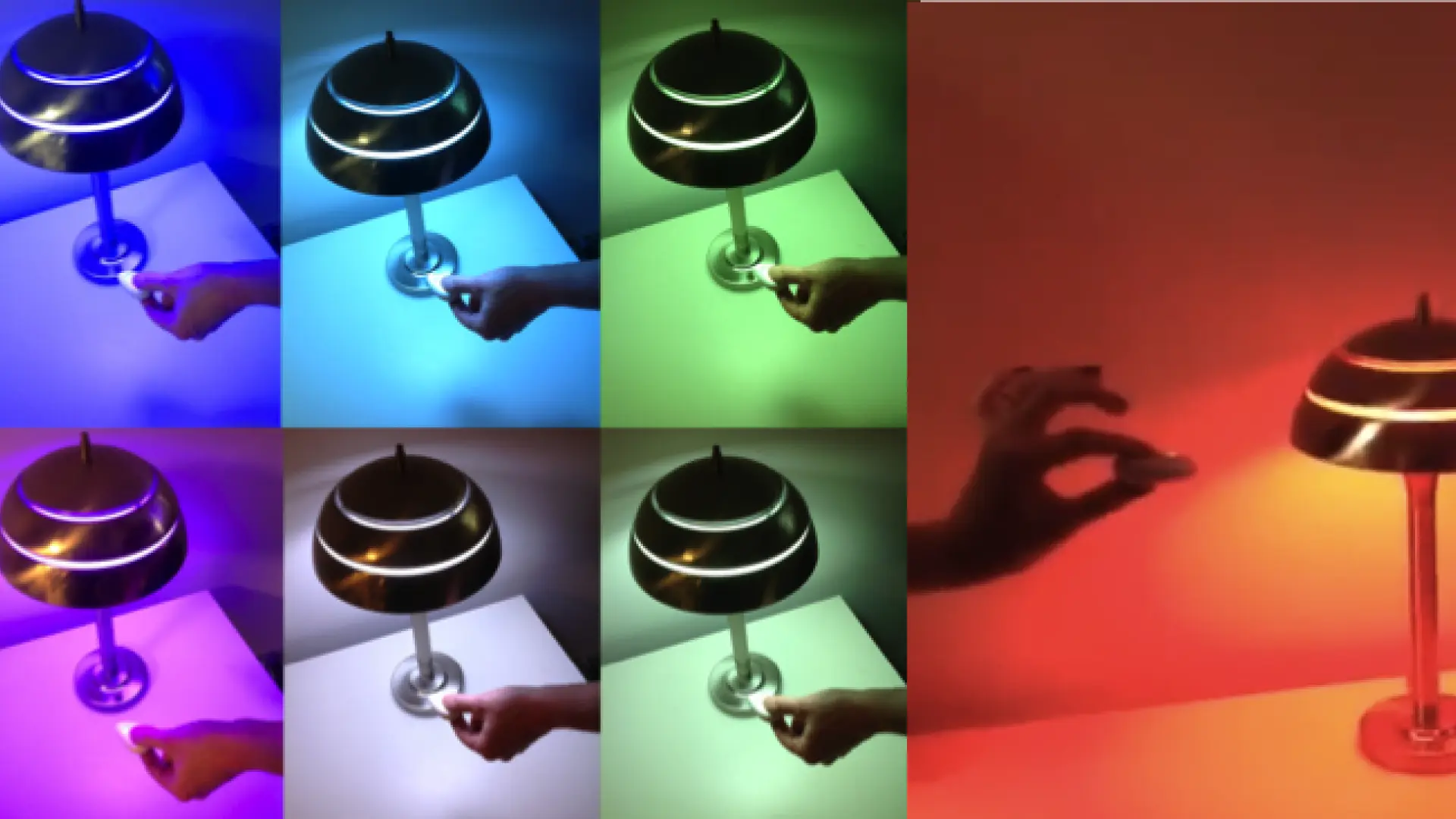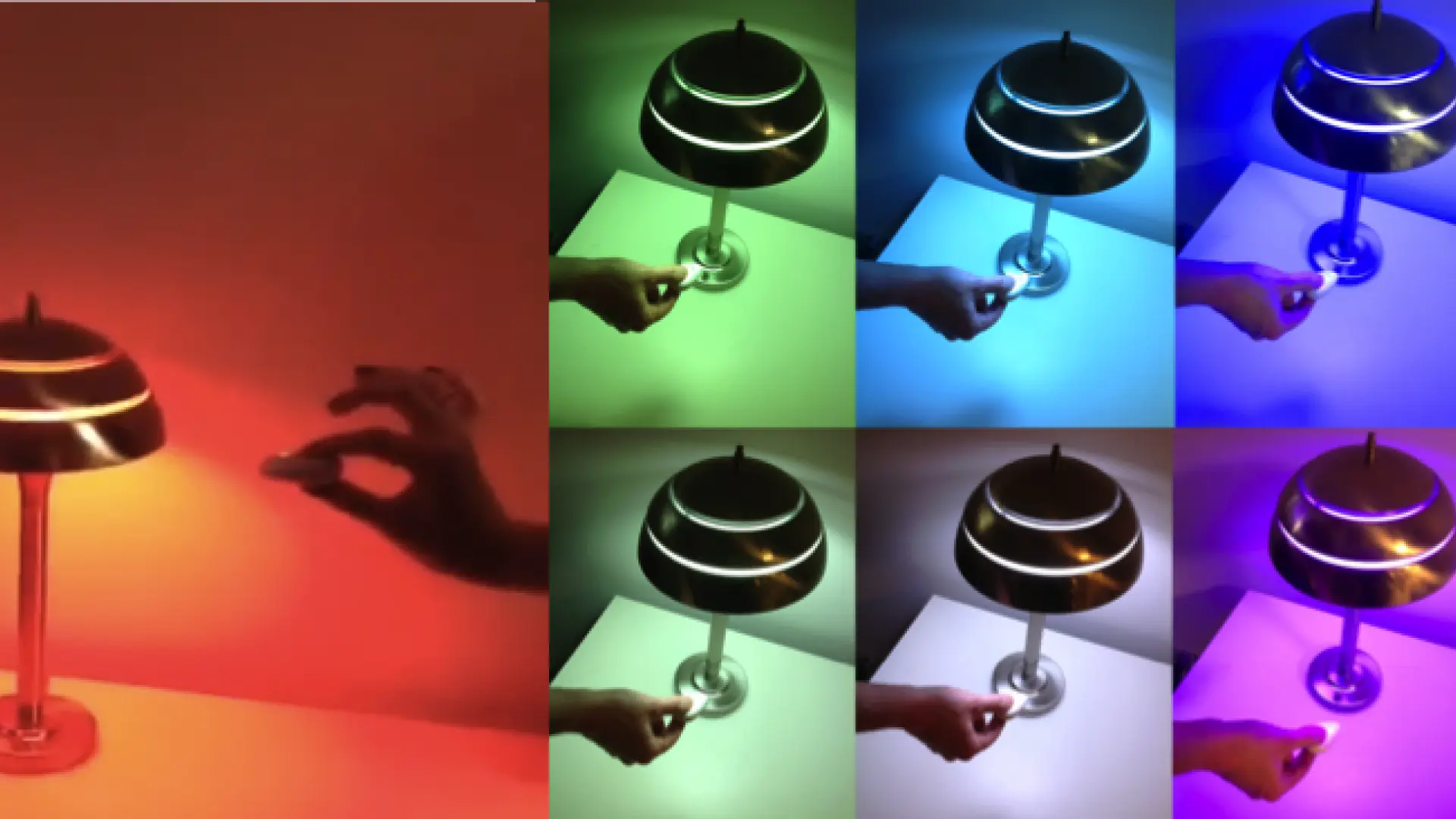MoodLight is an interactive ambient lighting system that responds to biosensor input related to an individual’s current level of arousal. Changes in levels of arousal correspond to fluctuations in the color of light provided by the system, altering the immediate environment in ways intimately related to the user’s private internal state.
MoodLight used a galvanic skin response sensor (GSR), provided generously by Galvanic, that was used to measure a person’s skin conductivity. GSR is an indirect measure of the sympathetic nervous system and can be used to infer whether a person is becoming more or less activated.
These sensors were connected to an ambient lighting system and controlled the hue of the lights: blue was the low arousal anchor, red was the high arousal anchor.
MoodLight can be used to check-in on your internal state, to accompany a meditation, or in a competitive 2 or more person game in a tug-of-war style game where players try to relax to change the hue of the light to their winning colour.
Articles
Snyder, J., Matthews, M., Chien, J., Chang, P. F., Sun, E., Abdullah, S., & Gay, G. (2015, February). Moodlight: Exploring personal and social implications of ambient display of biosensor data. In Proceedings of the 18th ACM conference on computer supported cooperative work & social computing (pp. 143-153).
Matthews, M., Snyder, J., Reynolds, L., Chien, J. T., Shih, A., Lee, J. W., & Gay, G. (2015, April). Real-time representation versus response elicitation in biosensor data. In Proceedings of the 33rd Annual ACM Conference on Human Factors in Computing Systems (pp. 605-608).
Matthews, M., Murnane, E., & Snyder, J. (2017). Quantifying the Changeable Self: The role of self-tracking in coming to terms with and managing bipolar disorder. Human–Computer Interaction, 32(5-6), 413-446.





